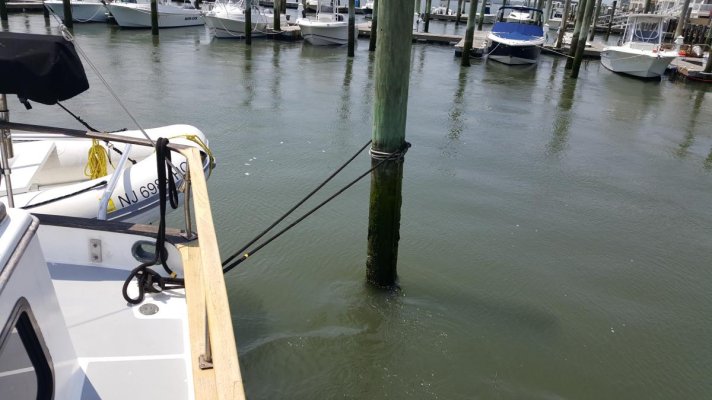Ken E.
Guru
- Joined
- Nov 12, 2016
- Messages
- 1,978
- Location
- United States
- Vessel Name
- Hatt Trick
- Vessel Make
- 45' Hatteras Convertible
I live on a 83', 80 ton boat. I solo more often than with passengers. I'm also 70 years old. I have severe arthritis in my hands. But neither age or arthritis stops me. Most yachtsmen don't take the time to really learn boat handling. They approach it as if driving a car with wheels.
The boat gets into dock position, the lines secure it. In more difficult conditions the use of spring lines help get the boat in position.
I usually dock with 1 spring line from mid bow to a dock cleat past midships. I have the spring fastened and ready to drop on a cleat before approaching the dock. I leave one engine in gear pushing against the spring and set my other lines. Not much different that how I docked ships.
If people would take a day or several days and learn their boat, docking would not be difficult. There are many professional books available that describe the forces affecting boat movement and how to control it.
In the hundreds and maybe thousands of dockings I have done, single and twin, current or slack, windy or not, I never had a thruster to use.
Excellent advise from Lepke. If you only know one spring line rig, this is it. Simple, easy, and more powerful than any thruster.




